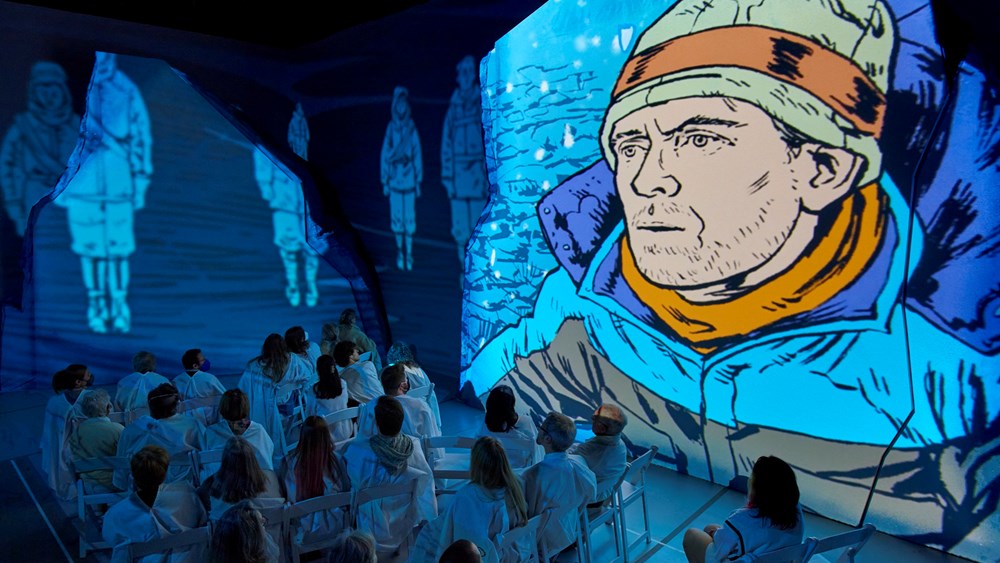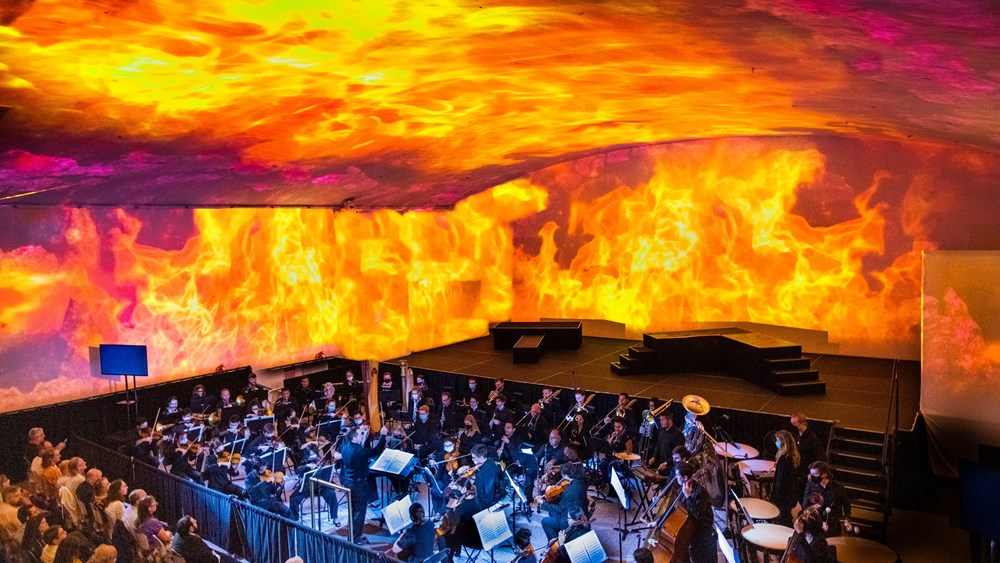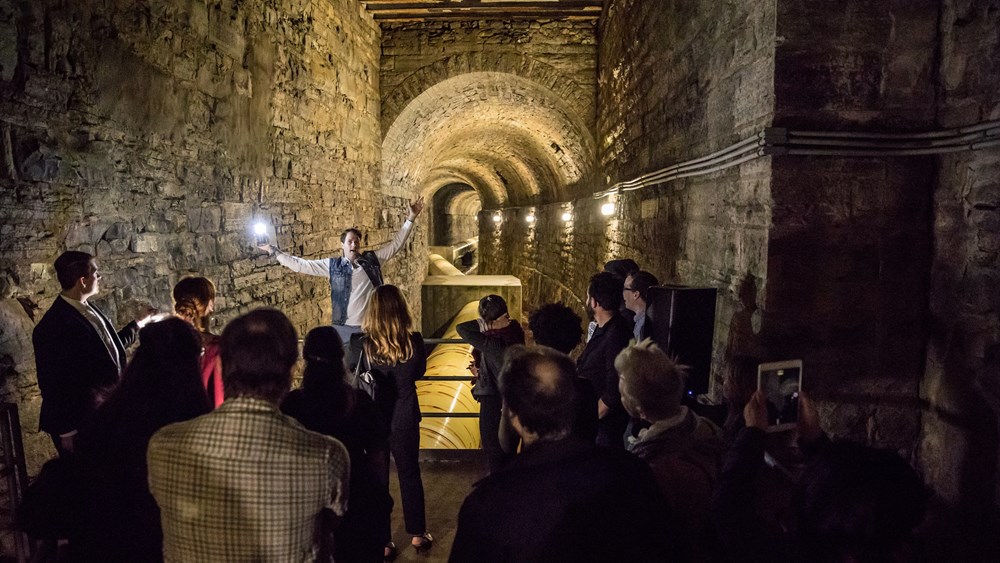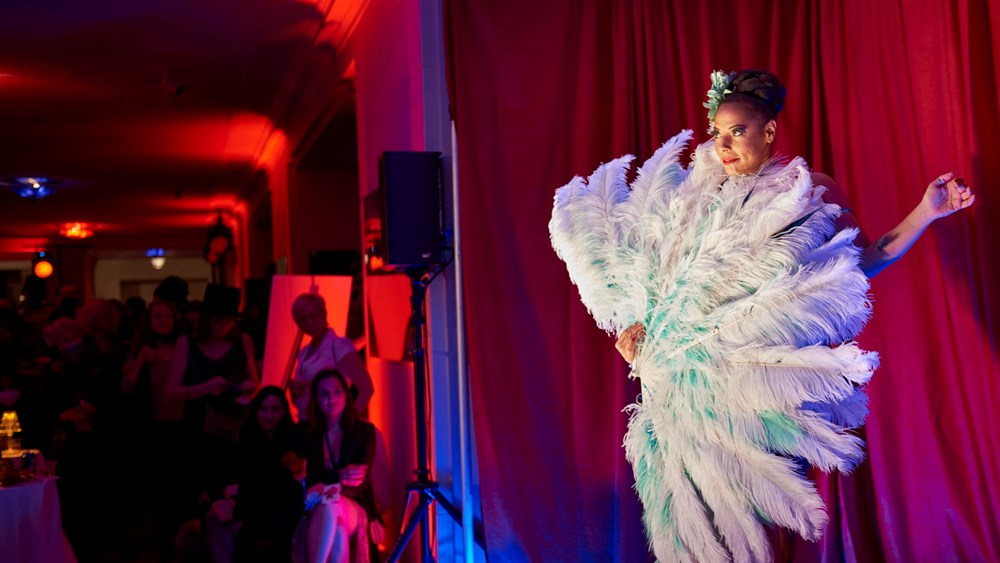360° Opera: Stunning "immersive" productions are surging in popularity
What’s it like to be on the world’s tallest mountain? “Endlessly glorious, endlessly exciting,” says Pippa Blake, a retired ski-academy administrator from Victoria, B.C., who in 2007 traveled to Nepal to fulfill her lifelong dream of visiting Mount Everest’s base camp.
Fast forward to February of this year, when Blake visited San Francisco to see Opera Parallèle’s “immersive” production of Everest, the 2015 opera by Joby Talbot and Gene Scheer. The one-hour project tells the story of three of the climbers involved in the 1996 Mount Everest disaster, when eight mountain trekkers died in a surprise blizzard as they descended from the summit. Rather than placing singers on a stage, the opera projects pre-recorded video and sound all around the performance space to break down the barrier between stage and attendee and fully wrap the audience in the experience. “I’ve never been to an opera where I felt I was part of it, really in it, feeling it, seeing it,” Blake says. “I’ve watched opera from a distance — it was lovely, beautiful — but this was everywhere.”

Opera Parallèle’s post-show surveys revealed that about 43 percent of attendees had never been to an opera before. “That’s unbelievable. That’s huge!” says Brian Staufenbiel, the company’s creative and stage director. To capture the horror and drama of the climbers’ experiences, Opera Parallèle used motion-capture technology to film opera singers performing the vocal parts and then combined the footage with graphic-novel-like illustrations by Mark Simmons and projection design by David Murakami. The end result was a moving graphic novel with all-caps text lettering that looked something like a Marvel comic book, but with animated faces that moved as characters sang. Opera Parallèle then projected the finished film to audiences of 150 each in a white room at San Francisco’s Z Space performing arts center, providing attendees with white ponchos to wear during the opera. The film was projected onto all walls of the space and attendees’ ponchos, literally “immersing” them in the opera. “It was incredibly emotional for me, and for everybody, I think,” says Blake, also an opera fan. “You really got a sense that you were actually there.”
She would know.

WELCOME TO THE MATRIX
Immersive performances and installations are hardly a new phenomenon, but these marriages of art and technology are experiencing a cultural moment. Millions in the U.S. have witnessed traveling immersive Van Gogh productions and been enraptured by the larger-than-life projections of sunflowers and landscapes in recent years. A project featuring Michelangelo’s Sistine Chapel ceiling frescoes is currently catching on like wildfire around the globe. There are artist collectives in Japan, New York, and London experimenting with high-tech ways to create all-encompassing artistic experiences through recorded visuals, music, and even scents.
Opera companies have developed and debuted numerous immersive productions over the years, adding a live singing element to these larger-than-life digital projects and installations. These kinds of productions tend to fall into a couple of main categories. First, there are site-specific operas that make a particular location, like a busy train station, parking garage, or museum gallery, into a stage, where companies sometimes even move audiences through the space as the performance progresses, like from a hotel to a parking lot or from a traditional theater space out into a lobby.
Second, like Everest, are those featuring digital projections, sometimes to augment traditional theater spaces and sometimes to fully surround attendees with the production. Some companies, like the Royal Opera House in London, have taken the idea of immersion even further. In 2021, the ROH created a “virtual reality” opera, Current, Rising, which strapped attendees into headsets, headphones, and a backpack with a computer to experience the opera. “People tend to fixate on the technologies, but it’s really about the user experience,” says Alan Brown, managing principal at the Detroit-based arts consultancy WolfBrown, and a fierce advocate for augmented and immersive experiences. “Someone could take Café Momus from the second act of Bohème and make a restaurant out of it — there’s a million creative opportunities to take operatic work and turn it into a fun experience that speaks to people who would never go to the opera.”

ADVENTURES IN OPERA
Location-specific immersive operas have become commonplace in the last decade at theater and opera companies alike. “I think this is where theater is going and has been going for a long time,” says David Lefkowich, founding artistic director of Minneapolis’ Out of the Box Opera, which in summer 2022 partnered with Opera Columbus to create an immersive La traviata. Audience members attended the opera as guests, with each act in a different part of a city hotel. They followed the action from room to room as the story progressed until the finale took place in the hotel parking lot, where an ambulance waited to take the gurney-bound Violetta away.
Out of the Box also staged Handel’s Acis and Galatea in 2019 at Minneapolis’ A-Mill Artist Lofts, where audience members were invited to the engagement party of the two lovers, mixing unknowingly with cast members. “But when Galatea stepped out of a limousine and the opera truly began, all of a sudden, the audience is saying: ‘Whoa. I don’t know what I’m seeing, but I’m part of something here,’” Lefkowich says.
In 2022, during its own run of Traviata, San Francisco Opera adapted one of the performances to be more immersive. The opera began in the company’s regular opera house auditorium, and then, following intermission, attendees moved out into the lobby areas for a grand, Traviata-inspired operatic party with thematic cocktails, food, and activities. That production sold out, and the company is planning to reprise the idea with its upcoming Elixir of Love in November.

$10,000 A MINUTE
Some opera companies are introducing digital projections in regular productions, either to replace or enhance scenery at times. The more complex and immersive the projections, however, the greater the cost to the company. Michael Rossi, a trumpeter and conductor with Washington National Opera, runs a summer music festival and academy in Miami Beach that last summer presented an immersive production of Das Rheingold. As an orchestra played on a stage and singers came in, two-dimensional images inspired by the opera were projected on screens around and above the room. “You’re inside the energy of the show,” Rossi says.
The projections introduced new technical difficulties. The lights from the orchestra’s music stands diminished the projections, and singers couldn’t be lit in the normal way, for the same reason. According to Rossi, moving from 2D to 3D projections — which would be ideal for creating a wraparound environment like in Opera Parallèle’s Everest — turned out to be cost-prohibitive. The estimate for creating the 3D projections was in the neighborhood of $10,000 a minute. So, Rossi sent himself to six months of coding camp, and he is now building the projections himself, using about 10 different software applications. Next, in July, the Miami Beach Classical Music Festival will present three immersive operas in a 360-degree format, this time using 3D mapping: Hansel and Gretel and a double bill of Ravel’s L’enfant et les sortilèges and Puccini’s Gianni Schicchi.
Still, some philanthropies and donors are showing excitement at the new possibilities. The City of Miami Beach awarded Rossi and co. $1.5 million to buy immersive equipment for the projects, and the Pohanka Foundation (founded by the late John Pohanka, a car dealership king and a Wagner enthusiast) is providing funding for their 3D immersive Hansel and Gretel.
The key factor is whether there is live singing and music involved or whether, like the Van Gogh projections or the opera Everest, the entire project is recorded digitally. Opera Parallèle received some specific grant support to produce Everest, Staufenbiel says. But, he adds, for companies wanting to do something similar in scale, “it’s probably a little less expensive than a big production, especially because you can play it over and over again if you’ve got a hit on your hands. You can play it 100 times, 200 times, 1,000 times.”
This article was published in the Summer 2023 issue of Opera America Magazine.

Greg Stepanich
Greg Stepanich, an editor for Gannett and founder of Palm Beach ArtsPaper, has written for Opera News, The Miami Herald, The Palm Beach Post, The Palm Beach Daily News, Ocean Drive, and the Knight Foundation. He also teaches at the Lynn Conservatory of Music in Boca Raton.





